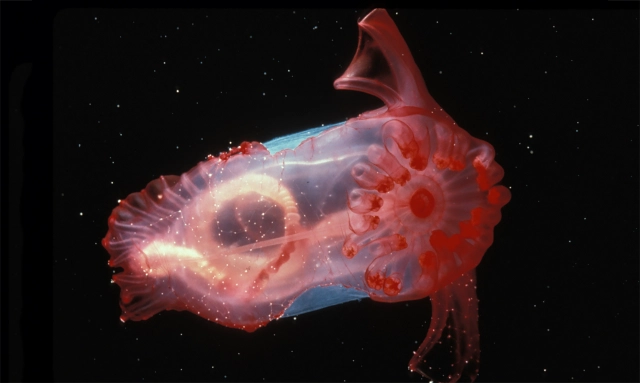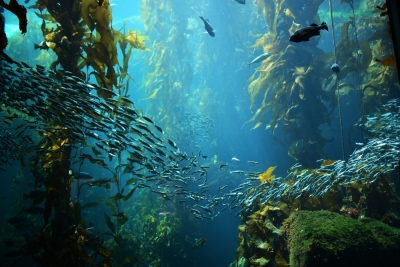IS THERE UNDISCOVERED LIFE IN OCEANS?

So much of our oceans is still unexplored and remains a mystery. In fact, it is safe to presume we know more about the surface of Mars than about Earth's seafloors! But whatever we little know of life in ocean depths is intriguing, fascinating, and incredible. The deep oceans are low on sunlight and plants but high on pressure, and yet, several creatures call this space home. Here's a glimpse of how they have adapted to life in unforgiving conditions.
Colours that help
Since they dwell in open waters without plants or rocks to hide under to safeguard themselves from predators, many creatures benefit from disguise. Some of them are red. rendering them difficult to spot since red light does not penetrate those depths. Some others are transparent, again tough to spot. Many others are bioluminescent, a good tool to confuse predators.
Heard of sea snow?
Since ocean depths hardly have any plant, finding "live meal" is a tough task. Apparently, the duration between two live meals can be even up to three weeks for a marine creature! That's where marine snow or sea snow comes into play. When no live meal is available, the next best thing to turn to is the dead. Organic particles from the surface waters - disintegrated bodies of animals and plants, mingling with fecal matter-drift down in what is known as "marine snow".
What is chemosynthesis?
At the cracks between oceanic plates are hydrothermal vents - these are the hot springs on the ocean floor. These vents send out chemical compounds such as hydrogen sulphide. These chemical compounds are used for preparing food - much like sunlight is used in photosynthesis. This process used by microorganisms such as bacteria to create food (such as glucose), is called chemosynthesis.
Though humans still don't have a complete understanding of ocean depths, we're definitely leaving our mark there- and, sadly, not in a good way. With global warming, over-fishing, and pollution, we're changing the composition of the oceans they are acidifying, and hosting crustaceans with microplastics, as far deep as the Mariana Trench, the deepest location on Earth.
Picture Credit : Google
